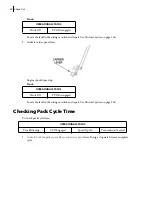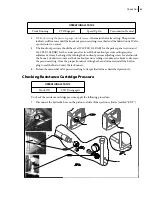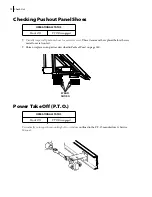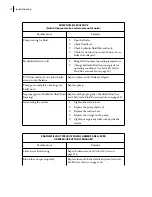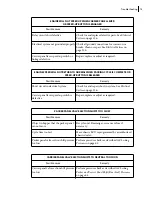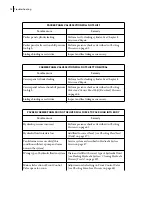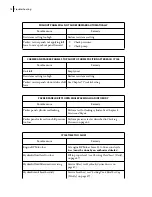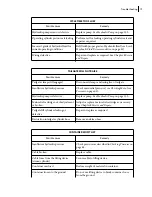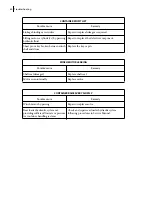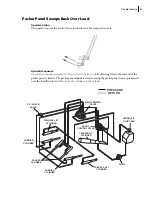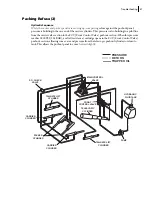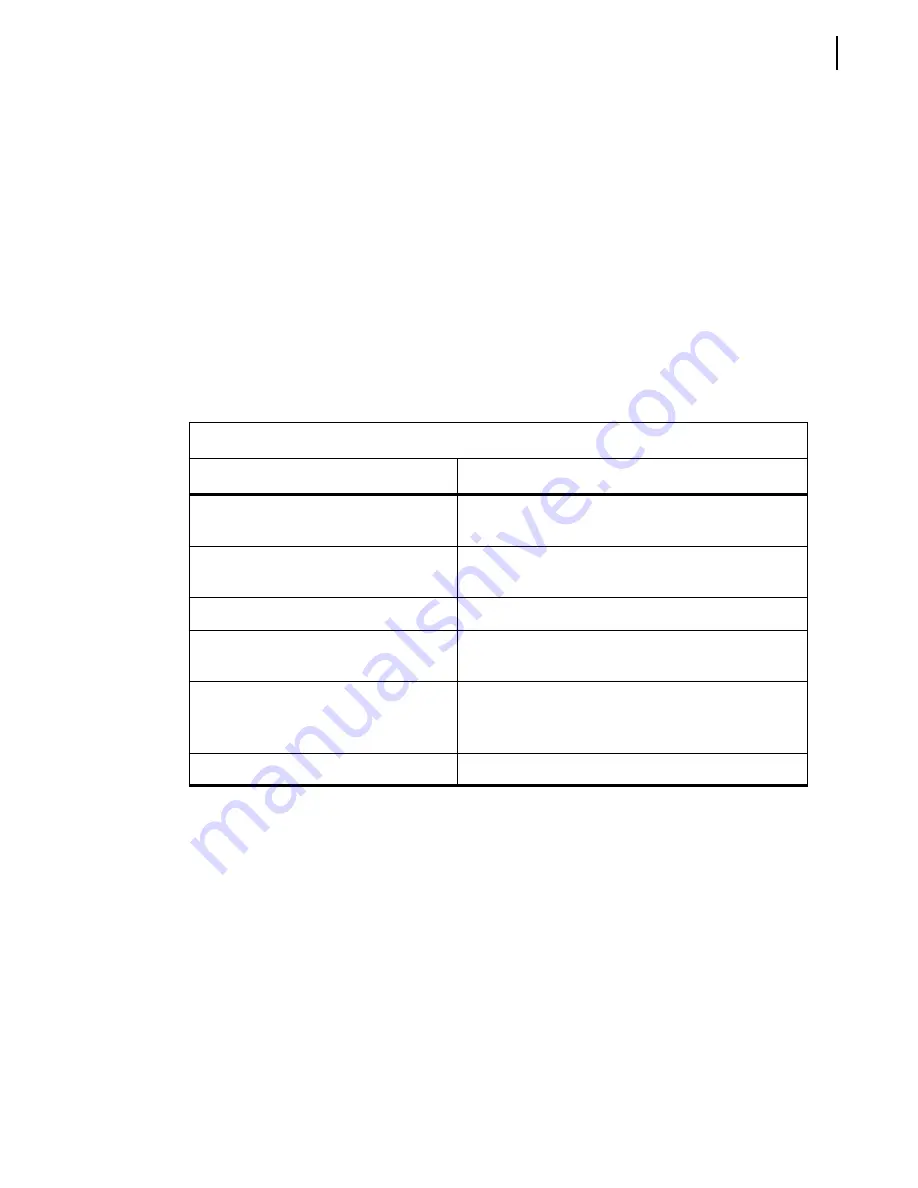
Troubleshooting 73
Excessive system flow rate (cycle time too fast)
can agitate the hydraulic fluid. Set the cycle time
according to specifications.
Do not thin hydraulic fluid with diesel fuel (lowers
the flash point). Weather permitting, use a
higher
flash point fluid.
After making any repairs on the hydraulic system, bleed
the system at reduced engine speed and
pressure to remove any trapped air. Depending on the size of the component, e. g. cylinder, hose, it
may be necessary to cycle the unit several times. Of course the larger the air pocket, the more cycles
are needed. To avoid potential problems, thoroughly bleed all hydraulic systems and ensure that all
inlet connections are tight and not ingesting
air.
Troubleshooting Tables
Use the following troubleshooting tables to find remedies to problems that have identifiable signs.
OPERATING IS ERRACTIC
Possible cause
Remedy
Speed up system operating erratically
Check electrical system. See Chapter 8
Service and
Repair
.
Hydraulic fluid too hot
Check for proper grade of fluid (see
Hydraulic fluid level too low
Check fluid level. Add fluid if necessary.
Bypass in cylinders
Test for leaking cylinders. See Chapter 8
Service and
Repair
.
Hydraulic fluid too cold
Bring fluid to operating temperature. Check for
proper grade of hydraulic fluid (see
Operating linkage bent or binding
Repair, replace or realign damage linkage.
Summary of Contents for 2R-III
Page 1: ...2R III MAINTENANCE MANUAL...
Page 2: ......
Page 3: ...2R III MAINTENANCE MANUAL...
Page 5: ......
Page 6: ......
Page 20: ...10 Introduction...
Page 42: ...32 Safety...
Page 58: ...48 Preventive Maintenance Figure 5 1 Hydraulic tank w return filter 1 2 3 4 5 6 7 8...
Page 66: ...56 Preventive Maintenance...
Page 102: ...92 Troubleshooting...


